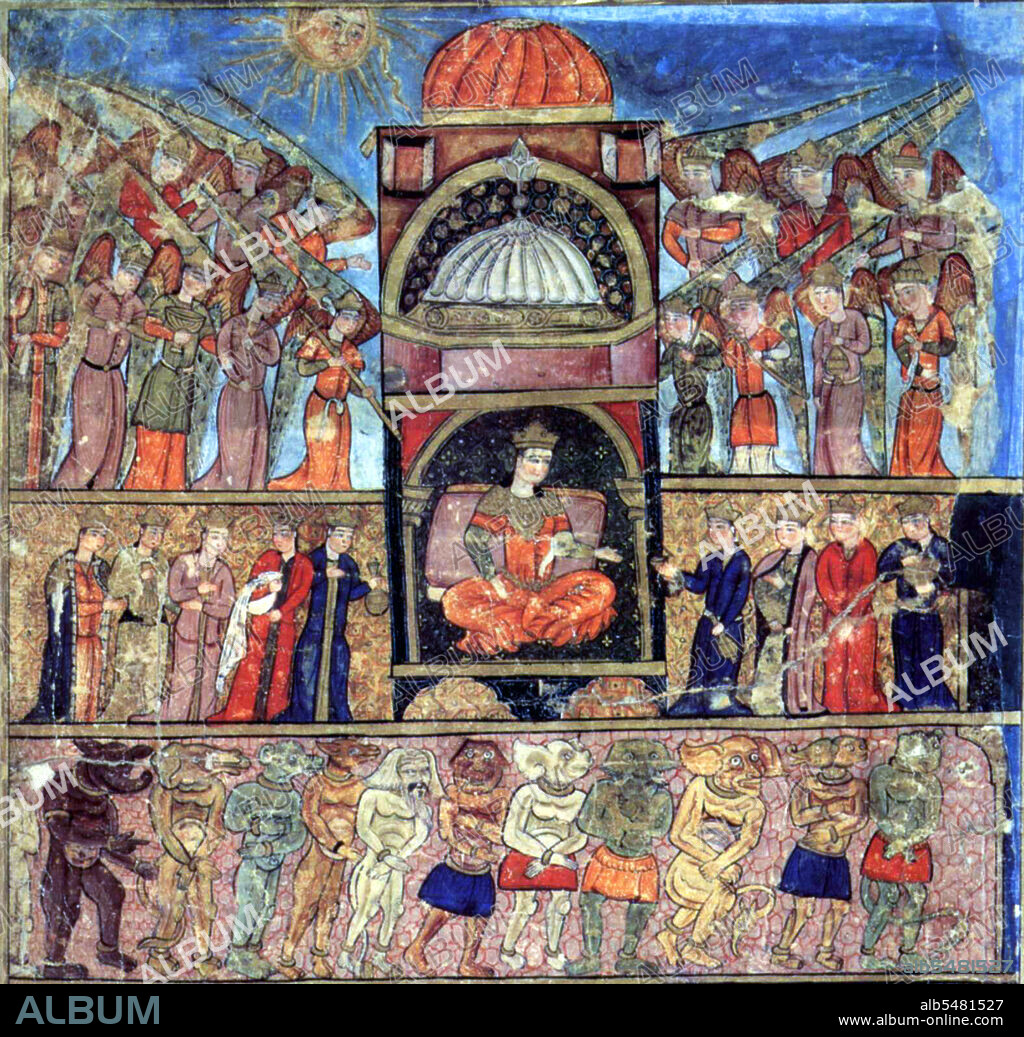alb5481527
An Ottoman miniature painting of King Solomon and Bilkis, Queen of Sheba, from a Sulaiman-Nama of Sharaf al-Din Musa Firdansi, c. 1500.

|
Add to another lightbox |
|
Add to another lightbox |



Buy this image.
Select the use:

Title:
An Ottoman miniature painting of King Solomon and Bilkis, Queen of Sheba, from a Sulaiman-Nama of Sharaf al-Din Musa Firdansi, c. 1500.
Caption:
Solomon, according to the Book of Kings and the Book of Chronicles, a King of Israel and according to the Talmud one of the 48 prophets, is identified as the son of David, also called Jedidiah in 2 Samuel 12:25, and is described as the third king of the United Monarchy, and the final king before the northern Kingdom of Israel and the southern Kingdom of Judah split; following the split his patrilineal descendants ruled over Judah alone. In the Qur'an, he is considered as a major Prophet, known as Sulaiman, son of David. The Queen of Sheba was a monarch of the ancient kingdom of Sheba and is referred to in Ethiopian history, the Bible, the Qur'an, Yoruba customary tradition, and Josephus. She is widely assumed to have been a queen regnant, although there is no historical proof of this; in fact, she may have been a queen consort. The location of her kingdom is believed to have been in Ethiopia and Yemen.
Credit:
Album / Pictures From History/Universal Images Group
Releases:
Model: No - Property: No
Rights questions?
Rights questions?
Image size:
4300 x 4134 px | 50.9 MB
Print size:
36.4 x 35.0 cm | 14.3 x 13.8 in (300 dpi)
Keywords:
ANT. OR.: YEMEN • ARABIA FELIX • ART • ARTS • ASIA • ASIAN • BILKIS • HISTORIA UNIVERSAL • HISTORIA • HISTORICAL • HISTORY • HISTORY. • JAHILIYA • KING SOLOMON • LEGEND • MONARCH • MONARCHY • OSMANLI • OTTOMAN • PAINT • PAINTING • PAINTINGS • QATABAN • QATABANIAN • QUEEN OF SHEBA • ROYAL • ROYALTY • SABAEAN CULTURE, YEMEN • SABAEAN WRITING • SABAEAN • SOLOMON • SOUTH ARABIA • TRADE AND COMMERCE • TRADE ROUTES • TURKEY • TURKISH • TURKS • YEMEN • YEMENI
 Pinterest
Pinterest Twitter
Twitter Facebook
Facebook Copy link
Copy link Email
Email
